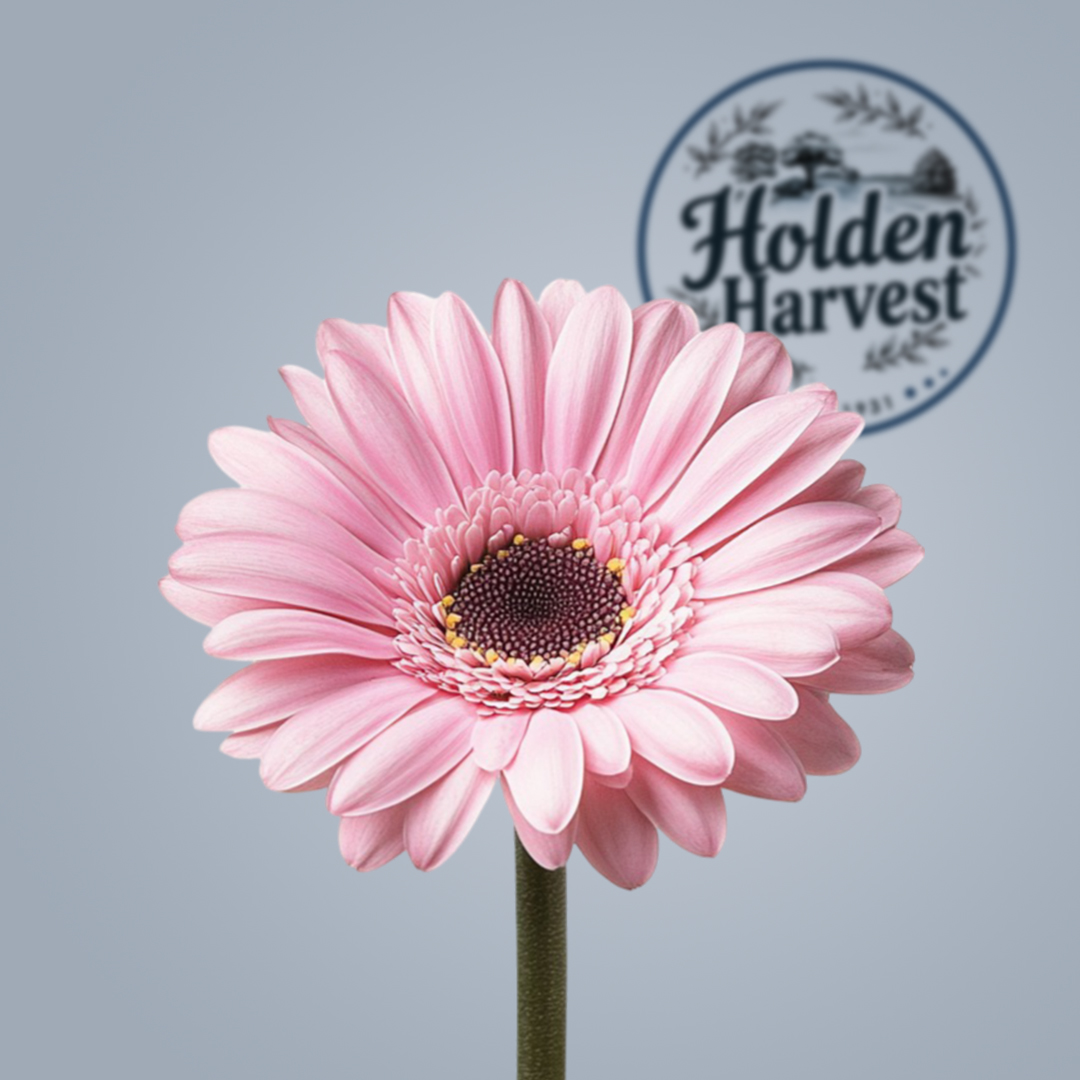The Gerbera is a vibrant flower known for its bold, colorful petals in shades of pink, orange, yellow, and red. Symbolizing joy and cheerfulness, it’s a popular choice for brightening up any occasion or space.
colors:
• Red gerbera
• Pink gerbera
• Yellow gerbera
• White gerbera
• Orange gerbera
Gerbera flowers are among the most vibrant and beloved blooms worldwide. With their wide range of colors and long-lasting freshness, they have become a favorite in gardens and floral arrangements. But what makes Gerbera so special? Let’s dive deep into everything about this stunning flower.
Gerbera flowers originate from South Africa and were first discovered in the 18th century. Named after the German botanist Traugott Gerber, these flowers have since gained global popularity due to their bright and cheerful appearance.
Gerbera belongs to the Asteraceae family, which also includes daisies and sunflowers. The scientific name of the most common variety is Gerbera.

Gerbera comes in a dazzling array of colors, including red, pink, orange, yellow, and white. Each color carries a different meaning, making them a versatile choice for various occasions.
Gerbera flowers typically measure between 7 to 12 cm in diameter, with long, sturdy stems that make them perfect for floral arrangements.
Gerberas thrive in well-drained, nutrient-rich soil with a slightly acidic pH (5.5 to 6.5). A mixture of garden soil, sand, and compost provides the best results.
These flowers prefer warm temperatures (18-24°C) and plenty of sunlight. They can be grown both in gardens and pots, making them ideal for different settings.
Gerberas require moderate watering. Overwatering can lead to root rot, while too little water may cause wilting. Keeping them in a bright, indirect sunlight area ensures healthy growth.
Aphids, spider mites, and powdery mildew are common problems. Regularly inspecting the plant and using natural pesticides can help keep them healthy.
Applying a balanced fertilizer every two weeks ensures robust growth and vibrant blooms.
Removing dead flowers and leaves promotes new growth and enhances the plant’s overall appearance.

In many cultures, Gerberas symbolize purity, innocence, and joy. They are often used in celebrations and festivals.
Gerbera is one of the most cheerful and colorful flowers that can be found in a variety of colors and sizes:
• Red gerbera: which is a warm and energetic color.
• Pink gerbera: especially in combination with white and yellow colors, it has a very beautiful and pleasant effect.
• Yellow gerbera: one of the popular colors that promotes happiness and energy.
• White gerbera: which is used a lot for special events and weddings.
• Orange gerbera: a very fresh and energetic color that gives a feeling of warmth and encouragement.
Gerberas brighten up any space, making them a perfect choice for home decor.
Their elegant and cheerful look makes them a popular choice for bridal bouquets and event decorations.
Gerberas help in purifying the air by removing toxins and increasing oxygen levels indoors.
Cut the stem at a 45-degree angle under water to enhance water absorption.
A clean vase with fresh water helps keep Gerberas fresh longer.
Adding a teaspoon of sugar or flower preservatives extends their vase life.
Gerberas can bloom all year round under the right conditions.
The Netherlands is home to the largest commercial Gerbera gardens, producing millions of flowers annually.
Conclusion
Gerbera flowers are not just visually stunning but also easy to grow and maintain. Whether you want to brighten up your home, gift someone special, or add beauty to an event, Gerberas are a fantastic choice.

1. What are the best conditions for growing Gerbera?
Gerberas thrive in warm temperatures (18-24°C), well-drained soil, and indirect sunlight.
2. How often should Gerbera be watered?
Water them moderately, ensuring the soil remains slightly moist but never soggy.
3. Can Gerbera be grown indoors?
Yes, as long as they receive sufficient indirect sunlight and proper air circulation.
4. Why do my Gerbera leaves turn yellow?
Overwatering, poor drainage, or nutrient deficiencies can cause yellowing leaves.
5. How long do cut Gerbera flowers last?
With proper care, cut Gerberas can last up to two weeks in a vase.